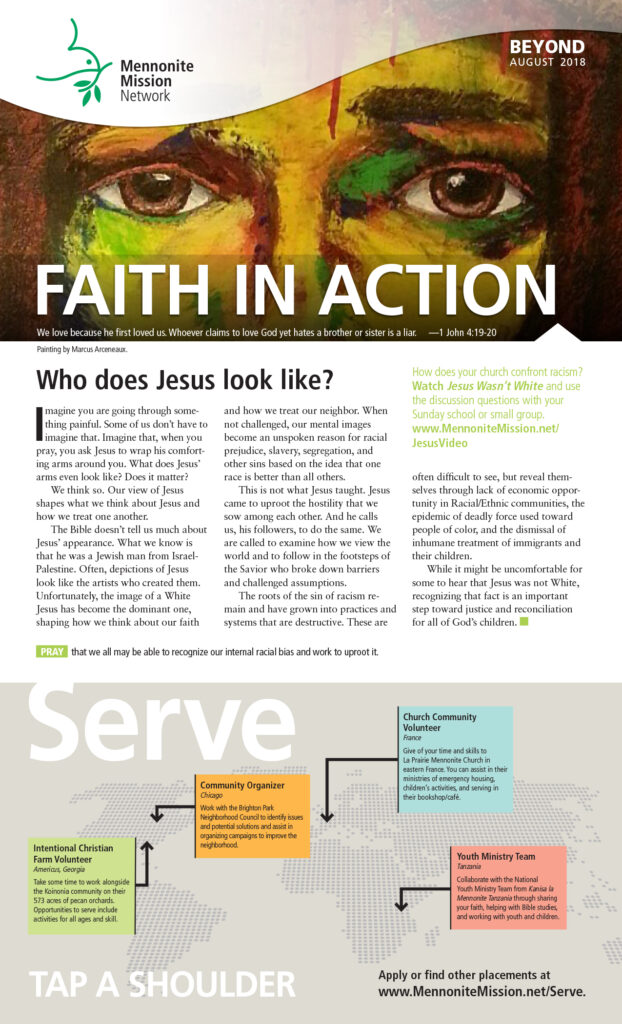Imagine you are going through something painful. Some of us don’t have to imagine that. Imagine that, when you pray, you ask Jesus to wrap his comforting arms around you. What does Jesus’ arms even look like? Does it matter?
We think so. Our view of Jesus shapes what we think about Jesus and how we treat one another.
The Bible doesn’t tell us much about Jesus’ appearance. What we know is that he was a Jewish man from Israel-Palestine. Often, depictions of Jesus look like the artists who created them. Unfortunately, the image of a White Jesus has become the dominant one, shaping how we think about our faith and how we treat our neighbor. When not challenged, our mental images become an unspoken reason for racial prejudice, slavery, segregation, and other sins based on the idea that one race is better than all others.
This is not what Jesus taught. Jesus came to uproot the hostility that we sow among each other. And he calls us, his followers, to do the same. We are called to examine how we view the world and to follow in the footsteps of the Savior who broke down barriers and challenged assumptions.
The roots of the sin of racism remain and have grown into practices and systems that are destructive. These are often difficult to see, but reveal themselves through lack of economic opportunity in Racial/Ethnic communities, the epidemic of deadly force used toward people of color, and the dismissal of inhumane treatment of immigrants and their children.
While it might be uncomfortable for some to hear that Jesus was not White, recognizing that fact is an important step toward justice and reconciliation for all of God’s children.
Pray that we all may be able to recognize our internal racial bias and work to uproot it.
Embodying the church, part 4:
Embodying the Church
This short reflection is the final part of a four-part series contributed by Joshua Garber, who serves with his wife, Alisha, and their son, Asher, in Barcelona, Spain. His series explores four core elements that light the way for faith communities as they engage in being the church today.
By Joshua Garber
Go to our enemies and love them —with the same fervor as our neighbors. The reality is you don’t have to be a Christian to love people. As Christ points out, Empire tells us to love our neighbor and hate our enemy, but we cannot share that sentiment. After all, anyone can love people who are like them. Many folks don’t want to admit they have an enemy, but the toxic political, racial and cultural divides we experience show us otherwise. Interestingly, people don’t stay your enemy very long when you actively love them.
-
Identify who Empire teaches you and your community to fear and hate.
-
Build relationships with people who don’t share your values.
-
Volunteer to work with a marginalized minority group. Invite someone you typically relate with to join you.
Keep up-to-date with Alisha, Asher and Joshua at www.WorthwhileAdventures.org.

